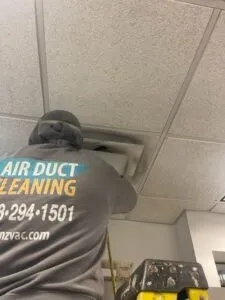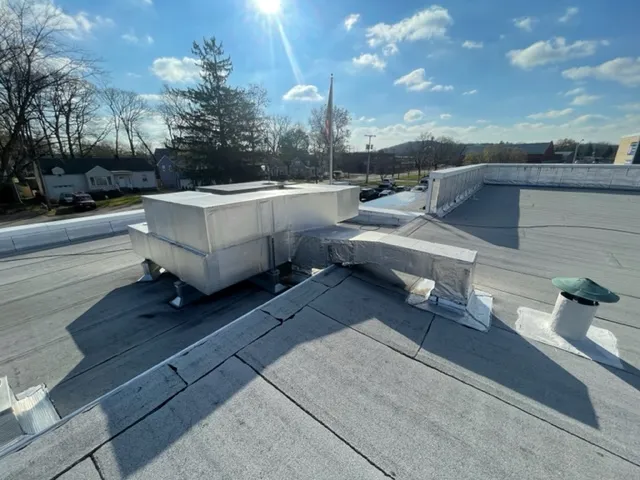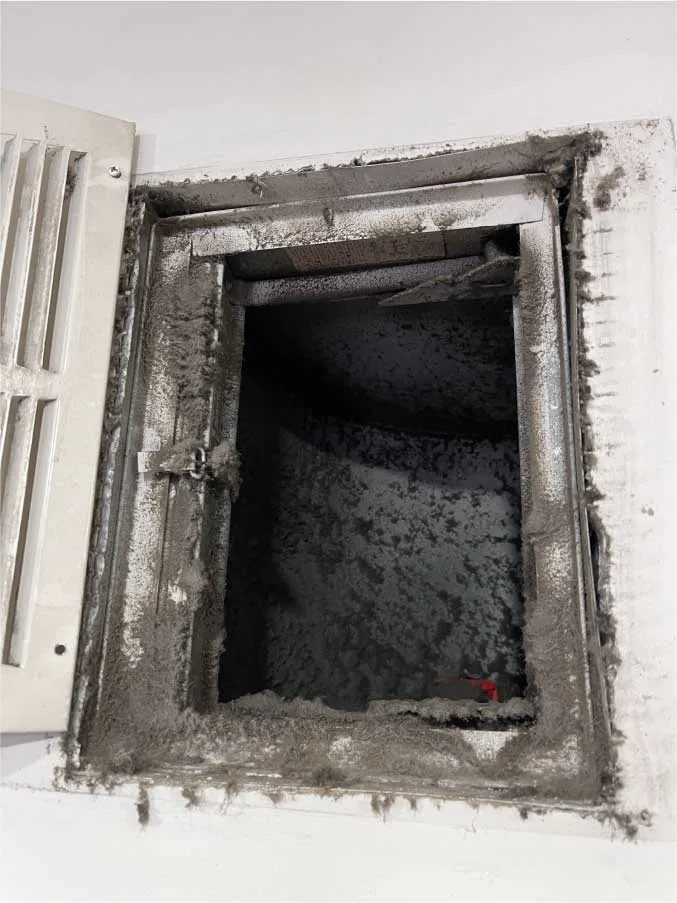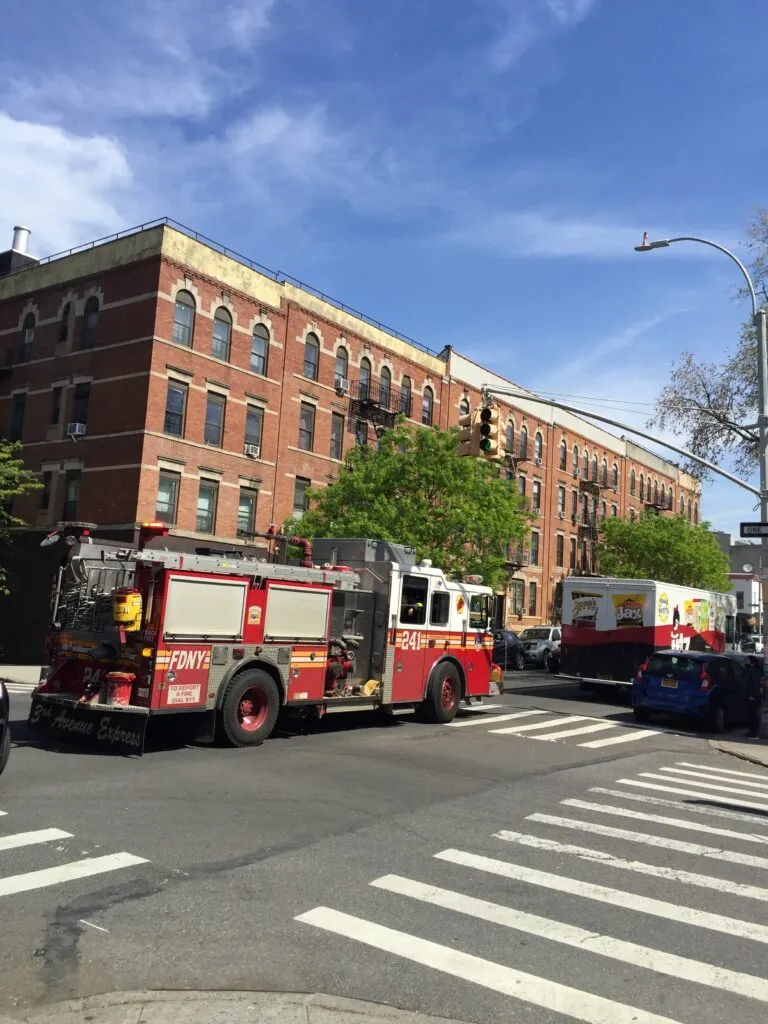Pollen and chemicals in the air, can indoor plants and proper yearly air duct cleaning help?
There are unforeseen consequences to living in a modern, energy-efficient building. Less airflow is one of these side effects. Health issues like asthma and sick-building syndrome can develop when there’s not enough airflow.
You’d be surprised how many chemicals come from modern furniture, synthetic building materials, and even your carpet. Indoor air pollution can come from these chemicals.
Saving The Planet With Indoor Plants
Houseplants can remove dangerous poisons from the air, especially in small, confined rooms with minimal ventilation, according to research conducted by NASA in 1989.
New studies have been done on indoor plants and their ability to clean the air. Plants are more natural, more cost-effective, and more soothing than air purifiers.
Other things plants do:
· Make you happier and more productive.
· Boost your memory and concentration.
· Get rid of stress and fatigue.
People just feel better when they’re surrounded by foliage. Stress can be reduced by interacting with indoor plants.
Reducing CO2 levels and increasing relative humidity is easy with indoor plants. They’re a natural humidifier that helps clear out stale air and prevents or eases irritation to your eyes, nose, throat, and lungs.
How Carbon Dioxide And Fresh Air Support The Growth Of Indoor Plants
Plants need to breathe fresh air so they can grow and dispose of waste. Photosynthesis is heavily influenced by air quality. There’s always fresh air in nature. Growing indoors also requires a constant supply of fresh air.
 Indoor Plants
Indoor Plants
Carbon Dioxide
For plants to grow, they need gases from the air. Your plant may not grow as fast if there aren’t enough gases. The main gas your plants need is carbon dioxide (CO2).
Photosynthesis is achieved by combining this gas with water and light.
Glucoses made during photosynthesis. The plant grows faster because of this. Your plant won’t grow well if there’s not enough carbon dioxide, water, or light.
As a result, you may not get as much as you expected. Carbon dioxide is especially important during growth.
Carbon Dioxide Concentration
Normal air has a CO2 concentration of 350 to 450 ppm (parts per million). This concentration can be measured with a CO2 meter. To get more CO2, you can use a variety of tools.
· You can use a CO2 boost bucket, for example. You can put this in your grow room.
· CO2 tanks work too. With a timer and a tap, you can control how much carbon dioxide gets into the grow room.
· A CO2 stove is another option. CO2 is released as a byproduct of burning natural gas or liquid propane. When adding CO2, we recommend increasing the room’s temperature as well to maximize photosynthesis.
It’s also important to give them the right amount of nutrients, water, and light. CO2 won’t do anything for the plant if you don’t add water and light, too.
Extraction and Fan
To cool themselves, indoor plants evaporate water. Water vapor has to be removed to keep the evaporation process moving. It’s helpful to have a proper extraction system when you grow indoors. That way, you can let out the warm, humid air and let in the fresh air.
Ensure that all the fresh air gets into the space, not just one place. You can circulate the air inside the grow room and blow it between your plants using a fan. Fungi and germs have a difficult time growing this way. In addition, moving air will help your plants grow stronger stems.
This makes it easier for the plant to collect water and nutrients.
Indoor Plants That Clean The Air Between Air Ducts Cleaning
There are lots of kinds of plants, so check the tag on the plant or go online to find out how much sunlight it needs. We’ve rounded up nine pretty tough plants.
1. Bird’s Nest Fern
These beautiful and air-cleaning indoor plants, crinkly leaf ferns, remove formaldehyde from new carpet and wall coverings.
When they grow, their glossy lime green fronds shoot out in rosettes, making them a striking bathroom plant, but they need 2 feet (60 cm) to spread out.
Bird’s Nest Fern grows on the tops of trees in Asia and Australasia and can tolerate light conditions ranging from bright and airy to semi-shady.
The only thing they need is moisture, so a humid shower room or ensuite is the right place for them. Make sure you mist them every other day, especially if they are placed in a dryer room. Avoid places below 55oF (13oC), and keep your room between 65-75oF (18-24oC).
2. Areca Palm
They’re native to Madagascar and have beautiful, dappled light reflected off their smooth-tipped branches. In bathrooms and showers, this plant excels at capturing mold spores and ammonia (often found in household cleaning products) thanks to its broad leaves.
Bright, filtered light is best for this houseplant. The leaves can scorch if there’s too much sun. Dypsis Lutescens does best in bright, indirect sunlight near a south- or
west-facing window.
Keep the palm away from drafts and radiators that can stress it. They thrive at temperatures around 65–75 °F (18–24 °C).
They don’t like mains tap water because it has fluoride in it, so they like distilled water or rainwater. Make sure the soil gets enough water but also lets it dry out. It’s
also important to have good drainage because tropical plants can get root rot if left standing in water.
3. Spider Indoor Plants
Plants like spider plants get rid of formaldehyde, a gas emitted by many things like cigarette smoke, dry cleaning, synthetic carpeting, fingernail polish, etc. Carbon
monoxide is also filtered out by spider plants in rooms with fireplaces and stoves.
You don’t have to worry about growing or maintaining spider plants. Keeping it moist in a semi-shady to shady location will suffice.
4. Philodendrons
Houseplants like philodendrons are also excellent air purifiers since they get rid of
formaldehyde gases. The trailing vines and pretty heart-shaped leaves make them
bulletproof plants.
It doesn’t matter if they’re in full sun or shade, as long as they get regular water. There are three best air cleaners: heart-leaf philodendron, Philodendron selloum, and elephant-ear philodendron.
5. Peace Lily
This pretty white flowering plant thrives at average indoor temperatures and is a beautiful addition to any home.
You can use peace lilies to clean your air of alcohol, acetone, trichloroethylene, benzene, and formaldehyde. Keep it semi-shaded to keep it moist.
6. Garden Mum
The beautiful blooms of mums make them a popular fall plant in garden stores. Plant interaction is also fun with these perennials since they sometimes need deadheading.
Make sure they’re in a cool spot with less than 10 hours of sunlight. Don’t let your pets eat them because they’re dangerous plants. They’re ready to plant outside once the frost is gone in the spring.
7. Weeping Fig
Originally from Southeast Asia and Australia, the ficus is a tree. You can grow it indoors until it’s 10 feet tall. Allow the soil to dry out between waterings, and grow
it in bright, indirect light. When the weather’s nice, you can put this plant outside.
8. Bosten Fern
Indirect light and high humidity are the best conditions for these plants. Plants like these aren’t difficult to grow, but they need water. Once a month, give your Boston
fern a good soak in the soil if it needs it.
9. Aloe Vera
Aloe has a lot of health benefits and is very simple to maintain. A clear liquid inside the leaves contains vitamins, enzymes, amino acids, and other compounds that heal wounds, fight bacteria, and reduce inflammation.
For quick pain relief, keep this plant in your kitchen window.
Incredible Indoor Plants for Kids Rooms
1. Carnivorous Plants
Carnivorous indoor plants are great pets for kids who are interested in the scientific concepts behind the plants and those who only want to have a living example of an insect-eating creature. A Venus flytrap is one of the easiest meat-eating houseplants to grow.
2. Ponytail Palm
A ponytail palm is a house indoor plants with a wild, tropical tangle that kids love. And ponytail palms aren’t palms at all. They’re succulents native to Mexico and Central America.
The indoor plants don’t need much water or care, so they’re perfect for kids who want to learn how to care for them.
3. Air Plants
These tiny natives of Central and South America are a big hit with kids. Air indoor plants take in nutrients and water through their leaves, attaching themselves to their perches only with their root-like appendages.
Grasshoppers can take care of them since they’re easy to grow.
4. Christmas Cactus
It’s a lovely addition to your child’s room to add some holiday color with its
winter-blooming succulent Christmas cactus. Its evergreen foliage makes it a
great house indoor plants for most of the year, and the plant itself is low maintenance.
Dangerous Indoor Plants
There are toxic houseplants that cause an adverse reaction when touched or ingested because they contain toxic substances. From mild irritation to death, these chemicals can cause a variety of symptoms and reactions in humans.
Houseplants with toxic leaves and flowers are dangerous plants to pets and kids since they chew on them more often.
Here are some dangerous indoor plants (houseplants).
1. English Ivy
A bookshelf or indoor container garden would look great with these vines. If English ivy is eaten in large quantities, it can cause serious health problems, such as skin irritation, a burning throat, a fever, and a rash.
If you want ivy to trail, hang it in a high place, out of reach of kids and pets.
2. Alocasia
Because of their shape and size, alocasias look like elephant ears or duck feet. Make sure there’s light, but don’t place it directly in the sun. They need water, but
don’t let them sit in it for too long. If they’re overwatered, they’ll get root rot.
Ingesting it can be fatal. It has sharp, needle-like calcium oxalate crystals on its leaves. The crystals can irritate your skin and eyes if you handle them incorrectly.
The leaves of this plant are toxic, so keep them away from kids and pets. Animals
and kids can get sick if they eat it.
3. Pothos
It is the world’s most popular houseplant. The vine climbs walls and can cover trellises. Pothos doesn’t need a lot of light and is easy to grow. Saponins are what make this plant poisonous.
Pothos can poison pets if they eat them. You should keep pothos out of reach because their leaves and stems can cause severe stomach irritation. Keeping pothos plants in your home isn’t a safe idea for kids or pets.
Dogs and cats can get sick from certain houseplants. You’ll likely see your pet drooling, vomiting, or suffering from diarrhea if he chews on pothos leaves or vines.
Due to excessive drooling, they may also have some swelling in their mouths and
tongues. If the toxicity is detected quickly, it should not last long.
4. Dieffenbachia
A dieffenbachia plant makes a great accent plant for any room. Using this plant or touching it without gloves can irritate the skin and eyes, as calcium oxalate crystals are similar to those on alocasia leaves.
Chewing on this plant may cause your dog to drool and swell its mouth. These symptoms should not pose a long-term health risk if addressed quickly.
Ingesting Dieffenbachia leaves can cause vomiting and diarrhea when eaten by humans or pets because they contain toxic elements that cause vomiting and diarrhea.
Seek medical attention if your dog develops gastrointestinal symptoms after chewing on a Dieffenbachia plant. Dehydration and difficulty breathing are common symptoms.
5. Dumb Cane
Add a tropical look to your decor with dieffenbachia selections that grow in low light. Because of the symptoms it causes when eaten, it’s called the dumb cane.
It’s enough to block airflow to the throat because the sap burns and swells the tongue. Ingesting large amounts of it can be deadly for humans and pets.
Allergens and Flowers: Choosing Flowers That won’t Aggravate Allergies
It’s important to take great care when picking flowers to gift to your loved one to make sure they don’t aggravate allergies.
A flower allergy can cause sneezing, itching, runny eyes, breaking out in a rash, stinging, coughing, and wheezing as the
first symptoms.
Consult an allergy specialist if you still aren’t sure what’s causing your allergy or take an allergy test. You can use both of these options to figure out what’s causing
your allergic reaction and how to prevent it from happening again.
According to studies, grass and weed pollen are more likely to cause allergies than flower pollen. It’s still possible to get an allergic reaction to flowers by inhaling them directly through the nose.
Most of the time, we can’t see it. As a result, we don’t realize we’re inhaling flower pollen when we smell flowers, causing respiratory problems, asthma, rhinitis, and skin allergies.
These conditions may produce numerous symptoms, like frequent sneezing; itchy, runny noses; itching, red, and swollen eyes; or a rash where the skin comes into contact with flowers, leaves, or pollen.
How To Choose The Right Flowers
Flowers With No Spikes On The Stem
Check that the flowers do not have any oils or spikes. You might get a rash if the oils, teeny-tiny hairs, or spikes make contact with your skin. This is especially true of chrysanthemums, lilies, tulips, and gerberas.
Itching, red and runny eyes, and coughing may signal an allergic reaction to flowers, even if a patient doesn’t know if they’re allergic.
It’s important to see a doctor who specializes in allergies as soon as possible. By doing this, your doctor can diagnose the causes or run an allergy test to make sure you don’t get any allergies in the future.
No Scent Or A Light Scent
According to research, flowers’ scents are actually volatile oils, which can cause allergic reactions and irritate the skin. A person with an allergy suffers from nasal hyper-responsiveness, which is a reaction to both the allergen and the
irritating substance.
Therefore, picking a flower with a scent could cause serious allergies.
Petals on Flowers
Choose flowers that don’t release pollen into the air or ones whose petals cover the pollen. Despite being larger than grass pollen, flower pollen isn’t usually airborne and relies on insects for pollination.
It’s been proven that certain immunoglobulin E can be detected in the blood of people who work in the horticulture industry, like rose growers in Turkey.
Some types of flowers can disperse their pollen into the air, which can cause allergies.
Final Thoughts
It is widely known that our outdoor and indoor air are severely contaminated with pollutants. We often talk about different means to purify our indoor air, such as air duct cleaning, HEPA filters, UV protection, etc.
However, there is another way through which you can get clean air indoors in between proper yearly air ducts cleaning. Indoor plants are more natural, more cost-effective, and more soothing than air purifiers.
They’re a natural humidifier that helps clear out stale air and prevents or eases irritation to your eyes, nose, throat, and lungs.
However, there are some dangerous indoor plants too that can harm you, your family members, and your pets. So be careful when choosing indoor plants for your home and clean your air ducts yearly.




